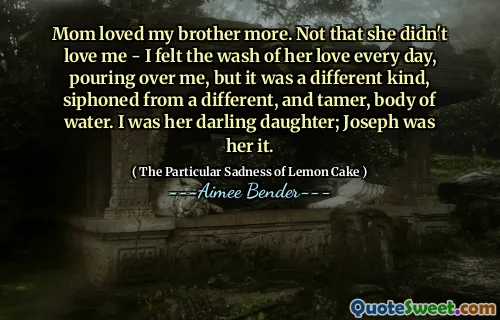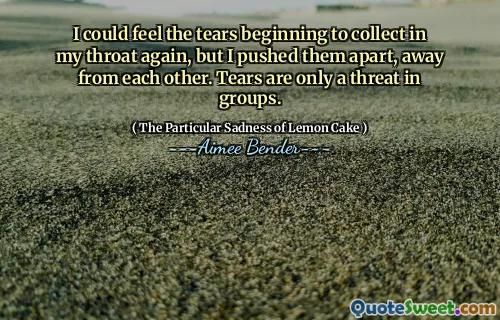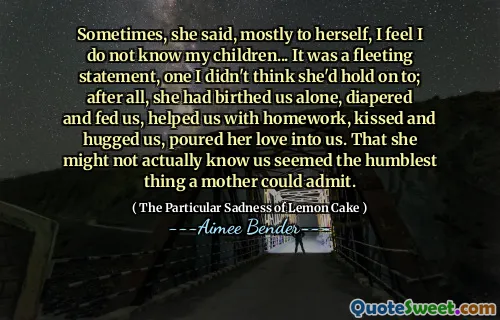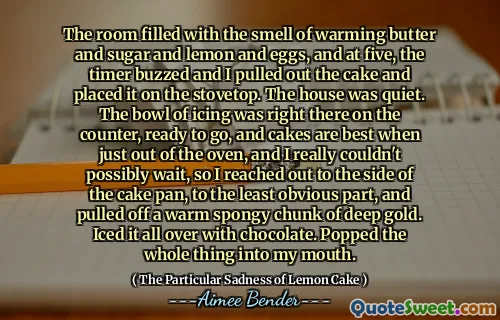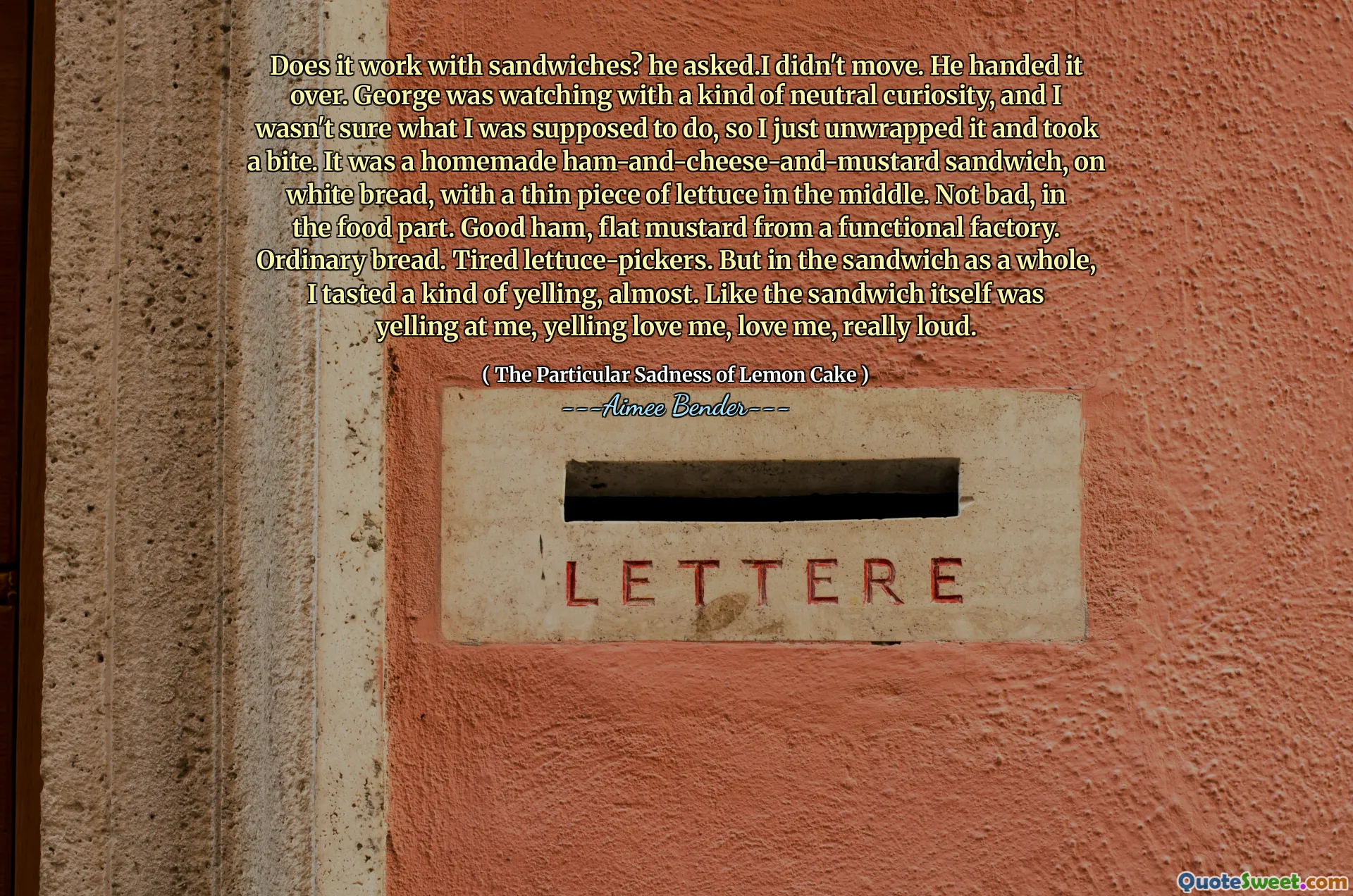
Does it work with sandwiches? he asked.I didn't move. He handed it over. George was watching with a kind of neutral curiosity, and I wasn't sure what I was supposed to do, so I just unwrapped it and took a bite. It was a homemade ham-and-cheese-and-mustard sandwich, on white bread, with a thin piece of lettuce in the middle. Not bad, in the food part. Good ham, flat mustard from a functional factory. Ordinary bread. Tired lettuce-pickers. But in the sandwich as a whole, I tasted a kind of yelling, almost. Like the sandwich itself was yelling at me, yelling love me, love me, really loud.
In a scene from Aimee Bender's "The Particular Sadness of Lemon Cake," a character is asked about the effectiveness of something with sandwiches. He does not move but takes the sandwich when handed to him, intrigued by the situation and George's indifferent observation. The sandwich consists of ham, cheese, mustard, and lettuce on white bread, and while the ingredients seem ordinary, the character's experience of it is anything but.
The tasting of the sandwich elicits a profound emotional reaction, as he perceives it as communicating a desperate need for love and attention. Despite the mundane components of the sandwich, it resonates deeply, almost as if it conveys an intense longing, making the experience memorable beyond just its flavor. The sandwich becomes a vessel for emotions, highlighting the connection between food and feelings.


